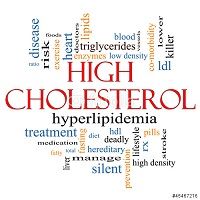Article
Early Treatment and Diagnosis are Needed to Reduce Fatal Risks of Familial Hypercholesterolemia
Author(s):
Younger patients with coronary heart disease who may have familial hypercholesterolemia need earlier diagnosis and treatment in order to reduce risk, according to the results of a recent study. FH is widely underdiagnosed, and is life-threatening.

Younger patients with coronary heart disease (CHD) who may have familial hypercholesterolemia (FH) need earlier diagnosis and treatment in order to reduce risk, according to the results of a recent study. Conducted by Alberico Catapano, PhD, of the Department of Pharmacological and Biomolecular Sciences at the University of Milan, Italy, and colleagues, the study was published in the journal Atherosclerosis in September 2016.
FH is widely underdiagnosed, and is life-threatening. The researchers say “It is clear only rigorous screening in the population can identify affected patients and could reduce the high risk of cardiovascular disease (CVD) in these patients.” They add that FH is caused by “a group of inherited genetic disorders in low-density lipoprotein (LDL) catabolism.”
Genotyping and/or clinical evaluation using the Dutch Lipid Network scoring method, or the similar Simon Broome register group estimation can be used as well. The researchers say that with the present study they “sought to evaluate the percentage of patients with high LDL-C levels and possible or probable FH in various countries using the Dutch scoring method in the population of >50,000 adult outpatients treated with statins in the previously reported multinational, cross-sectional Dyslipidemia International Study (DYSIS).
“A total of 54,811 patients from 29 countries were included in the analysis,” report the authors. The Dutch scoring method assigns points, and the researchers explain, “FH was considered possible in individuals with 3-5 score points and probable in individuals with 6-8 score points.” The majority of participants in this study, 83.8%, were assigned 0-2, the second-largest group, 15%, were assigned 3-5 points, and finally, the smallest group of 1.2% were assigned more than 6 points.
The researchers say, “Ischemic cardiovascular diseases occurred at a statistically significantly and clinically-relevant higher level in the group of patients with probably FH compared with the total population.” However, there were no differences regarding hypertension and diabetes.
The researchers performed an age-directed analysis at 10-year intervals and say they found a highly significant distribution. They say, “The prevalence of possible or probable FH was highest in the youngest age group of 45-54 years (27.5% and 2.9%, respectively; n=9488) and declined thereafter to 15.5% and 1.2% in the 55-64 years (n=18,058) group, 10.8% and 0.5% in 65-74 years (n=17,796) and 9.3% and 0.4% in patients >/= 75 years of age (n=9469).” Additionally, the researchers found significantly different rates of likely FH in different countries, with the highest in Egypt, the Baltic States, Russia, and Slovenia.
“In conclusion, in this multinational study of 54,811 patients including 23,973 individuals in China, we found unexpectedly high rates of possible and probable FH, as well as very high cholesterol levels in some countries, despite statin therapy,” say the authors.
Related Coverage:
- Surprising Findings in Genetic Analysis of Familial Hypercholesterolemia Patients
- PCSK9 Inhibitor Dramatically Reduces Cholesterol in Patients with Familial Hypercholesterolemia
- The Burden of Disease in Homozygous Familial Hypercholesterolemia





